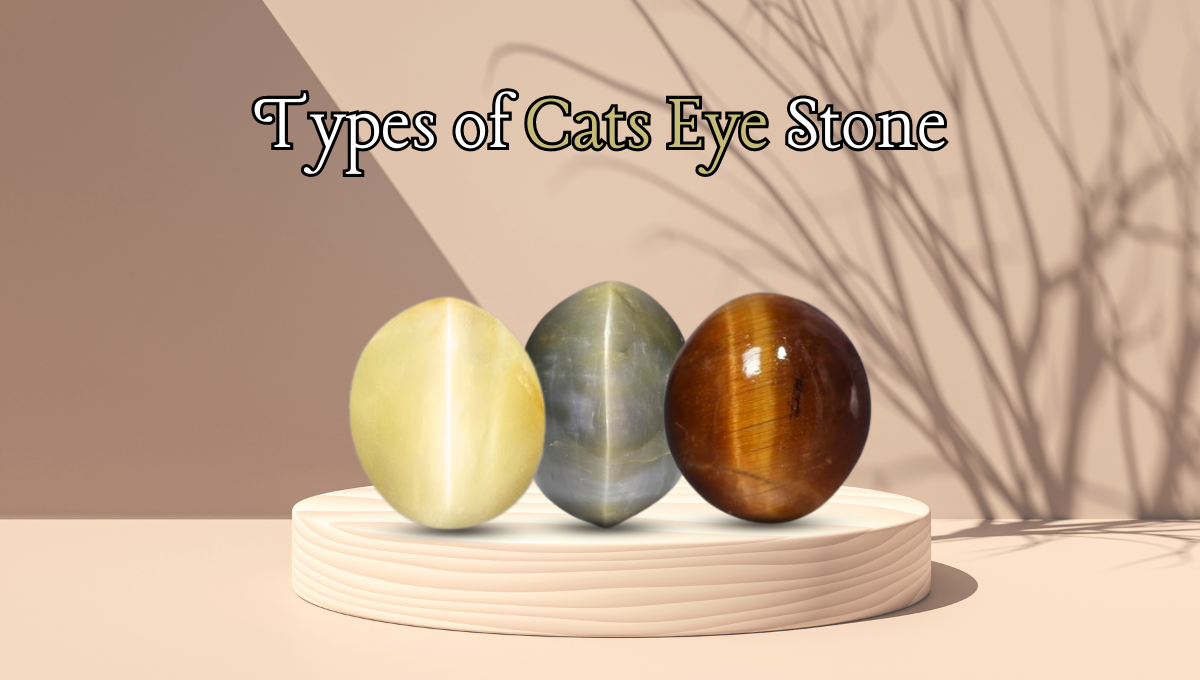One of the most intriguing things about the world of gemstones is that the more you dwell deep into it, the more it entices and jolts you. The realm of gemstones is packed with some of the most flabbergasting, formidable, and elusive gemstones and cat’s eye stone is undeniably one of them. Widely denoted as Ketu stone in India and other Asian countries, a natural cat’s eye stone distinguishes itself from the pack by exhibiting the rare chatoyancy effect.
Cat’s eye aka Lehsunia stone exhibits a chatoyancy effect due to the internal parallel reflection from tube & needle-like structures within the gem. This chatoyancy effect carves a bend of light that orients according to the shape of the cat’s eye gemstones. However, the chatoyancy effect is not the only striking feature cat’s eye gemstone is renowned for. The original Lehsunia stone is equally revered for its multitude of variants which are as stellar as the chrysoberyl cat’s eye. Not many gem enthusiasts are aware of the different types of cat’s eye stones because of lackluster promotion and commercialization at the global stage.
This riveting blog post will do a fine job of familiarizing you with different types of cat’s eye gemstones that will satiate your curiosity regarding Lehsunia Ratna and elevate your knowledge by leaps and bounds. Let’s dive deep into this blog.
Table of Contents
Read Worthy: – Cat’s Eye Stone vs Tiger’s Eye Stone
Types of Cat’s Eye Gemstones
Chrysoberyl Cat’s Eye (Lehsunia):
Chrysoberyl cat’s eye is the most renowned and valuable of all cat’s eye gemstones. Its striking chatoyancy is so iconic that when people refer to a cat’s eye gemstone without specifying the type, they typically mean chrysoberyl. Other cat’s eye varieties must always be mentioned with their specific names.
This hard gemstone is found in Sri Lanka, India, Zimbabwe, and China. Due to its exceptional hardness, the chrysoberyl cat’s eye is suitable for all types of jewelry. Known for its protective properties, cat’s eye is believed to ward off evil and bring good fortune. Often used in rings, pendants, and cabochons due to its striking visual effect. Stones with vivid colors and high transparency fetch higher prices.
Moonstone Cat’s Eye:
Moonstone, admired for its mystical shimmering light, boasts a rarer and captivating cousin – the moonstone cat’s eye. This gemstone combines the enchanting glow of moonstone with the mesmerizing chatoyancy effect, a play of light resembling a cat’s eye. Typically found in milky white or with a subtle bluish sheen, moonstone cat’s eye originates from locations like Sri Lanka, India, and Madagascar.
Beyond its captivating appearance, moonstone cat’s eye holds significance in various cultures and spiritual practices. The stone is said to enhance one’s inner wisdom and connection to their gut feelings. Moonstone cat’s eye is thought to promote emotional stability and calmness. In some traditions, the gemstone is linked to feminine power and nurturing qualities.
Don’t Miss: – Cat’s Eye Stone for Which Rashi
Tiger’s Eye
Tiger’s eye is a popular and distinctive variety of quartz that exhibits a captivating optical phenomenon known as chatoyancy, commonly referred to as “cat’s eye” effect. While several types of quartz can display this property, tiger’s eye stands out as the most well-known and sought-after among them.
The chatoyancy in tiger’s eye creates a striking band of light that appears to move across the surface of the stone as it’s rotated, resembling the slit eye of a cat. This effect is caused by the stone’s fibrous structure and the way it interacts with light.
Tiger’s eye typically occurs in rich, warm hues, with the most common varieties appearing in:
Golden yellow
Golden brown
Reddish-brown
These colors are primarily due to the presence of iron oxides within the stone. The interplay of these warm tones with the shimmering chatoyancy gives tiger’s eye its unique and appealing appearance.
Also Read: – Who should wear Cat’s Eye
Apatite Cat’s Eye:
One of the most renowned cat’s eye gemstones is apatite. This captivating yellow gem exhibits a striking optical effect reminiscent of the chrysoberyl cat’s eye. However, apatite is a softer mineral, making it less suitable for all types of jewelry. It’s particularly well-suited for pieces like pendants, brooches, and earrings.
This mesmerizing cat’s eye phenomenon can be observed in other gemstones as well, but it is exceptionally rare, which enhances their value and allure. Collectors highly appreciate these gems, recognizing their unique beauty and significance.
Tourmaline Cat’s Eye
Cat’s eye tourmaline is a distinguished member of the tourmaline family, renowned for its striking display of chatoyancy. This optical phenomenon, which creates a narrow band of light across the surface of the stone resembling a cat’s eye, places it among the more prized and sought-after gemstones in the market.The defining feature of this gemstone, caused by parallel inclusions within the crystal structure. The “eye” effect is typically sharp and well-defined in high-quality specimens.
Tourmaline ranks 7 to 7.5 on the Mohs scale of hardness. This makes it sufficiently hard and durable for everyday wear, including in ring settings which are prone to impacts. Its toughness also allows for various cutting and polishing techniques without risking damage to the stone.
While durable, cat’s eye tourmaline should be protected from harsh chemicals and extreme temperature changes. Ultrasonic and steam cleaners should be avoided; instead, warm soapy water and a soft brush are recommended for cleaning.
Check Out: – Lehsunia Stone Benefits
